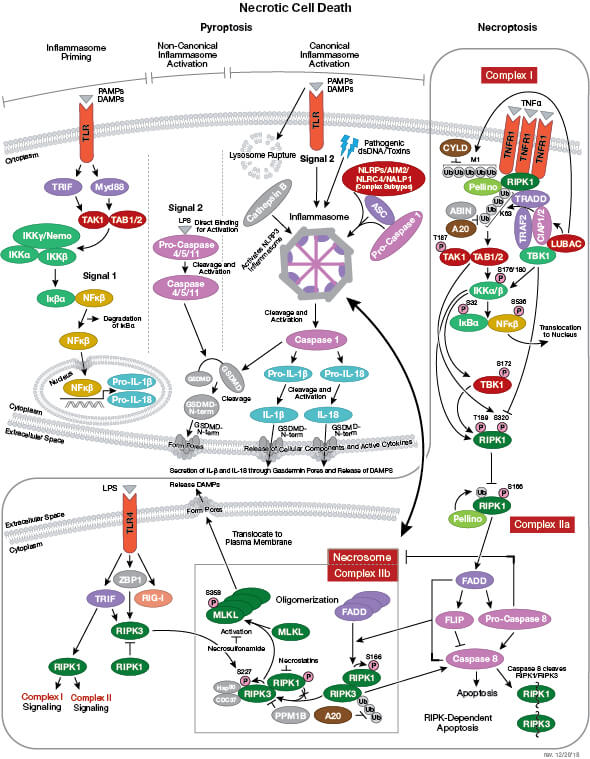
세포는 세포의 상황과 pathogen의 침입, 조직의 손상, 대사 장애 등 복잡하고 다양한 이유로 인해 여러 방식으로 사멸합니다. 수십 년간의 연구를 통해 세포가 스스로 사멸하는 다양한 방식의 상세한 특성화 및 분류가 가능해졌습니다. 갑작스러운 생리적 손상이나 우발적인 세포 사멸(accidental cell death, ACD)의 경우와 같이 세포의 죽음은 급속한 외부의 영향으로 인해 발생할 수 있습니다. 또한 약리적 또는 유전적인 방법을 통해 조절될 수 있는 molecular pathways를 통해 사멸이 발생할 수 있으며, 이를 조절된 세포 사멸(regulated cell death, RCD)이라고 합니다. 일반적으로 세포 사멸은 형태학적 변화, 유발 요인 및 관련된 생화학적 경로에 따라 다양한 유형으로 분류됩니다.
아래 cell death 관련 target protein과 자료를 클릭하셔서 cell death 연구를 위한 Cell Signaling Technology의 다양한 제품을 만나보세요.
아래 Cell Signaling Technology의 Mechanisms of Cell Death brochure를 다운로드 해보세요.
Types of Cell Death
Cell death mechanisms include:
- Apoptosis – programmed cell death that occurs during growth and development and can also occur in response to harmful environmental stimuli.
- Necrosis – can be a passive or an active, regulated process such as necroptosis or pyroptosis.
Different assays can be used to determine the mechanism of cell death or rule out a mechanism of cell death within a cellular population.
Apoptosis
Apoptosis is a highly regulated form of programmed cell death that occurs in multicellular organisms during development, throughout the lifespan, and in response to cellular stress. Apoptosis is mediated by a family of proteolytic enzymes called caspases. Other proteins, including proapoptotic and antiapoptotic proteins, also play important roles. Dysregulation of apoptosis occurs in several disease states, including autoimmune disorders, neurodegenerative diseases, and cancer.
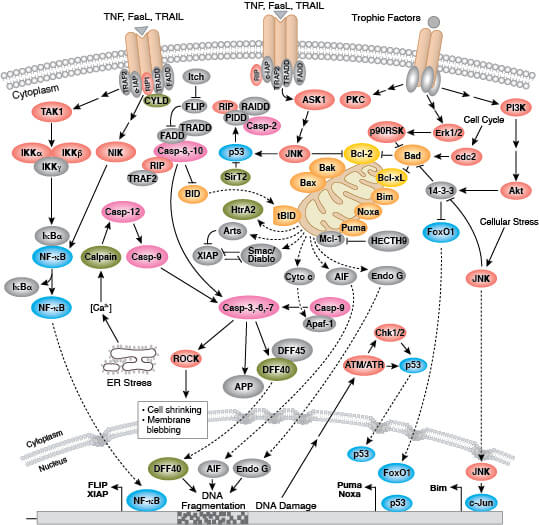
Apoptosis is a form of programmed cell death mediated by caspases and a host of other proteins.
Regulation of Apoptosis: Interactive Pathway >>
Apoptotic cells can be distinguished from viable cells by phenotypic changes and activity of certain proteins. Several different methods can be used to analyze and measure levels of apoptosis within a population. These assays include:
| Assay | What is Measured | |
|---|---|---|
| Annexin V assay | Detects changes that occur to the lipid bilayer early in apoptosis | 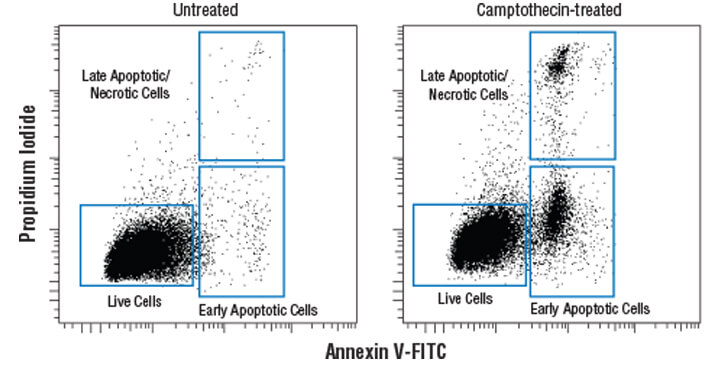 |
| TUNEL Kits | DNA fragmentation which is a hallmark of apoptosis | 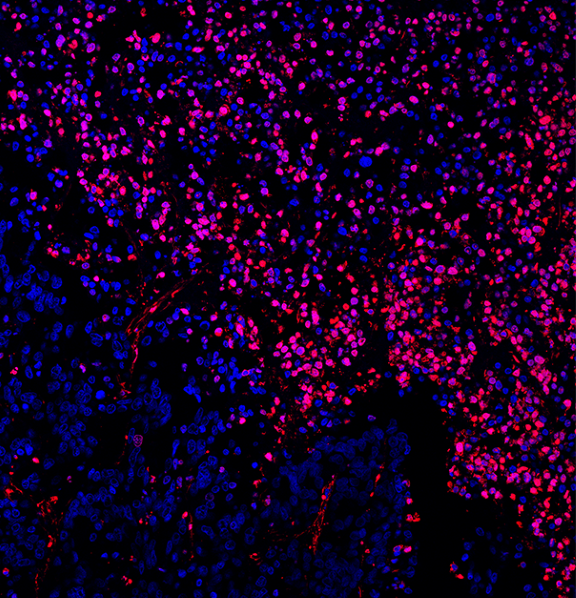 |
| Caspase cleavage | Cleavage of caspase-3, caspase activity assay, and cleavage of other caspases and PARP are frequently used readouts for apoptosis | 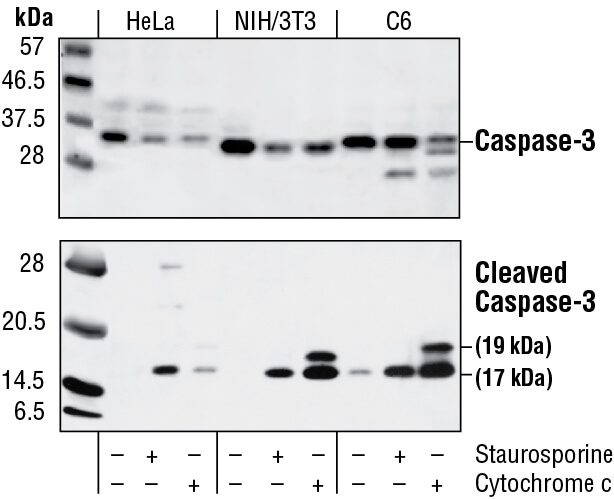 |
| Chromatin condensation | Detects apoptotic cells with condensed chromatin after staining with nuclear dyes, such as DAPI or Hoechst 33342 | 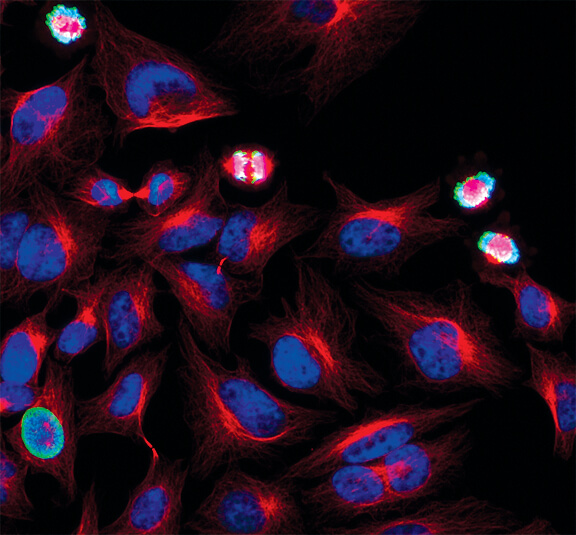 |
| Cytochrome c release | Translocation of cytochrome c from mitochondria to the cytoplasm is a hallmark feature of apoptotic cells | 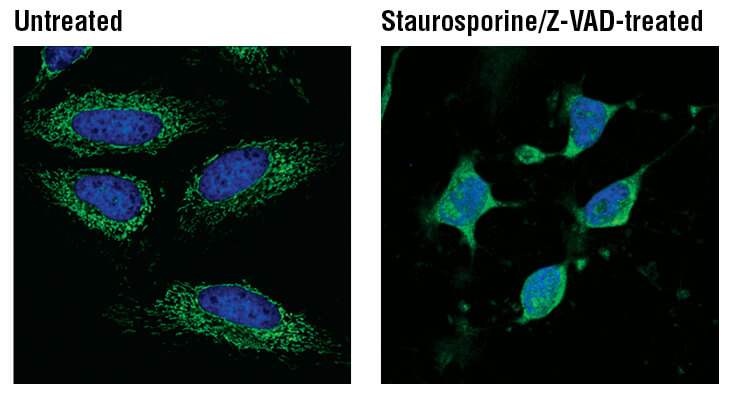 |
| Mitochondrial membrane potential assay | Depolarization and subsequent decrease of the mitochondrial membrane potential is a hallmark feature of apoptotic cells | 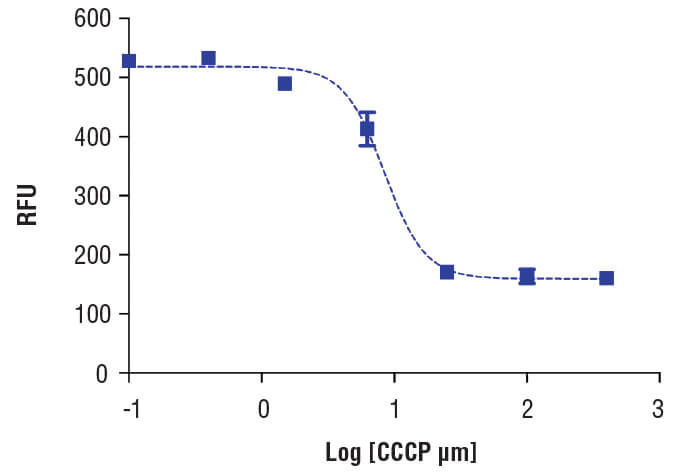 |
Necrosis
Necrosis has been classically defined as an unprogrammed cell death that occurs following acute injury or infection or when apoptosis is inhibited and is characterized by cellular swelling and lysis. Necrotic cells release intracellular contents into the surrounding environment, which activates an inflammatory response to recruit phagocytes to clear dead cells. Uncontrolled, however, necrosis can cause severe tissue damage, such as gangrene.
While it was previously thought that necrosis was passive and unprogrammed, recent data have uncovered different types of regulated necroptotic pathways.
In addition to necrosis, other lytic cell death mechanisms include:
- Necroptosis – a programmed and regulated form of necrosis which requires RIP3 and MLKL and is activated by pro-inflammatory signaling as well as ischemic injury and viral infection.
- Pyroptosis – a form of programmed lytic cell death that typically occurs in immune cells in response to microbial or viral infection and requires caspase-1 and gasdermin-D
| Necroptosis Marker | Necroptosis Marker Description | |
|---|---|---|
| RIP | Ser/Thr kinase that regulates inflammation and cell death | 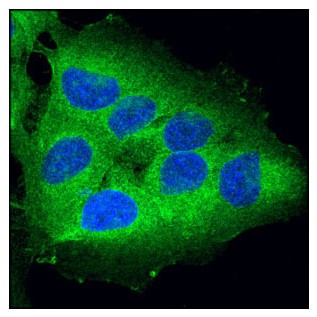 |
| RIP3 | Ser/Thr kinase that is required for necroptosis | 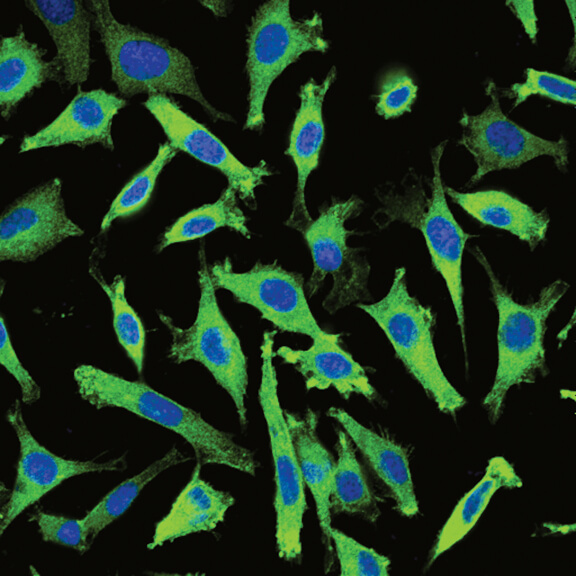 |
| Phospho-RIP | Activated RIP associates with RIP3 to trigger necroptosis |  |
| Phospho-RIP3 | Activation of RIP3 leads to phosphorylation of MLKL | 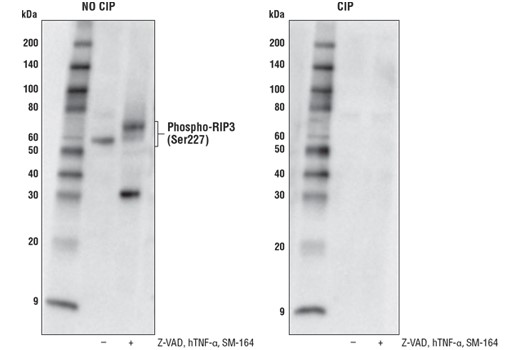 |
| MLKL | Downstream protein target of RIP3 | 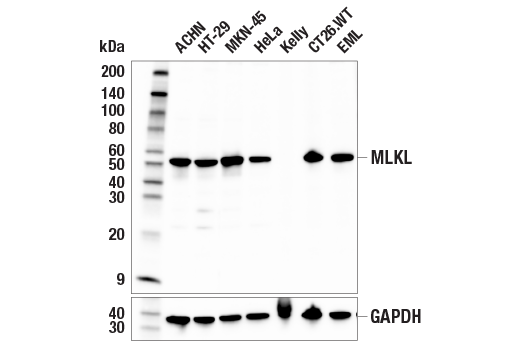 |
| Phospho-MLKL | Phosphorylation of MLKL leads to pore formation and is a marker for necroptotic cells | 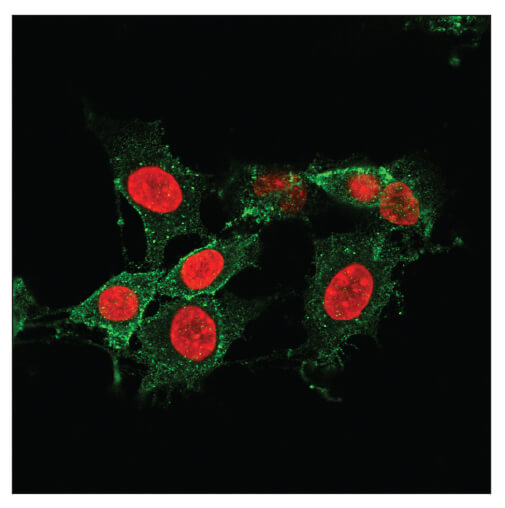 |
| Pyroptosis Marker | Pyroptosis Marker Description | |
|---|---|---|
| Inflammasome formation | Pyroptosis is characterized by the formation of the inflammasome; a marker for the inflammasome is NLRP3 | 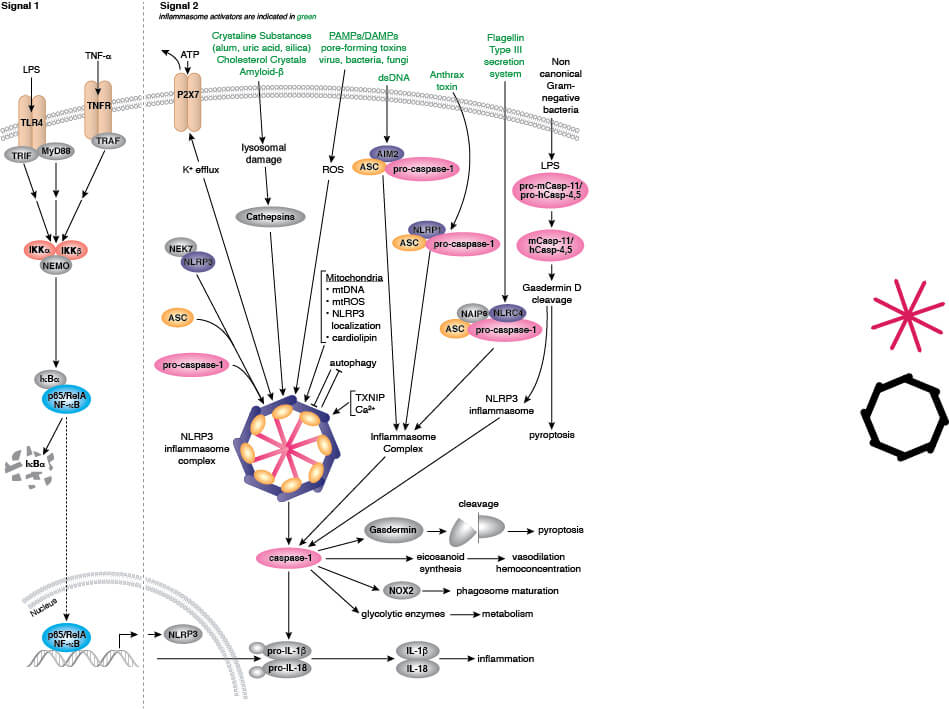 Inflammasome Signaling Interactive Pathway >> |
| Caspase-1 activity | Cleavage of caspase-1 is a marker for its activity. Activated caspase-1 cleaves IL-1β and gasdermin D | 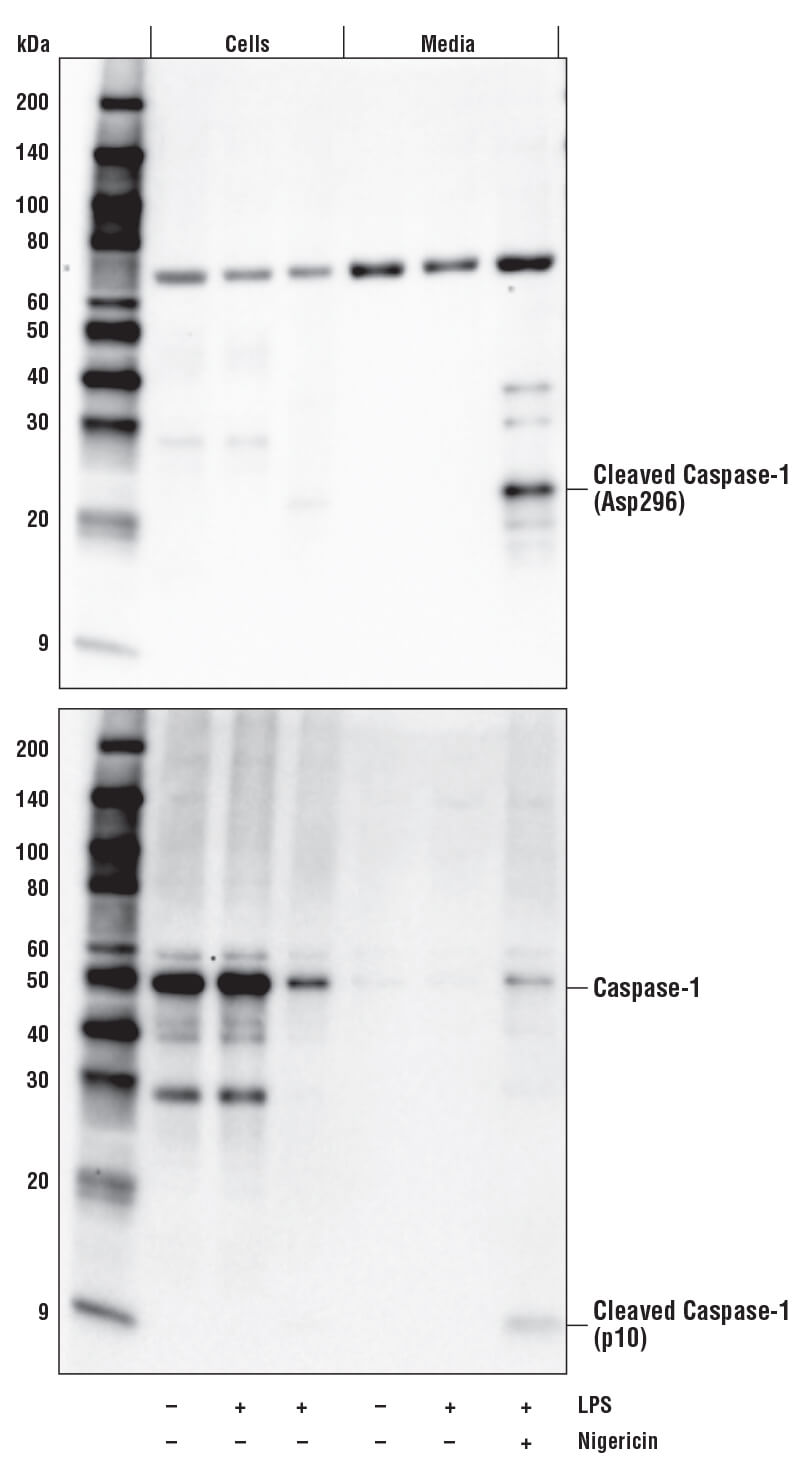 |
| Gasdermin cleavage | Cleavage of gasdermin-D occurs during pyroptosis lead to pore formation | 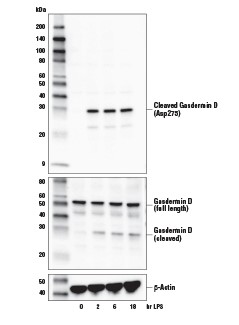 |
| Necrosis Marker | Necrosis Marker Description | |
|---|---|---|
| High mobility group protein B1 (HMGB1) | Nuclear protein that is released into the extracellular environment during necrotic, but not apoptotic, cell death | 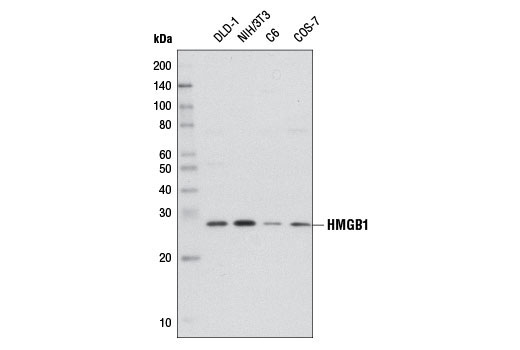 |
| Lactate dehydrogenase A (LDHA) | Cytosolic enzyme released into the extracellular space during necrotic cell death | 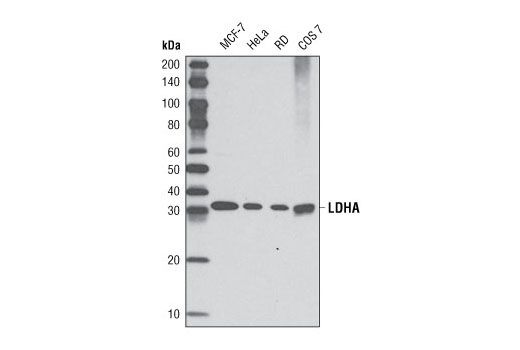 |
| Interleukin-1β (IL-1β) | Proinflammatory cytokine released during necrosis | 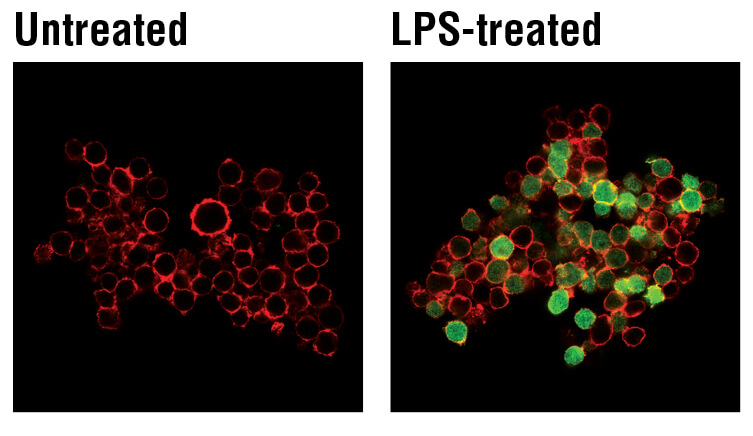 |
* 주문 및 견적 문의는 지사/대리점으로 연락 주세요.


